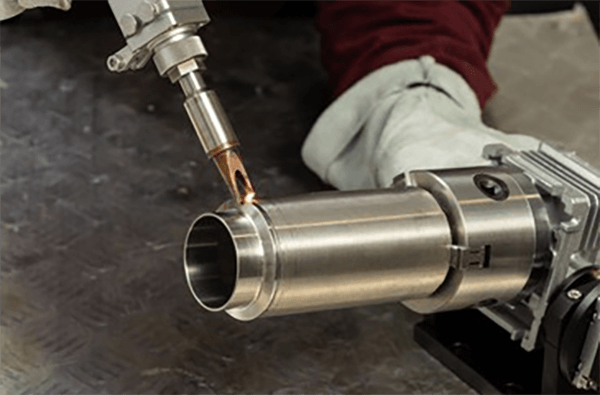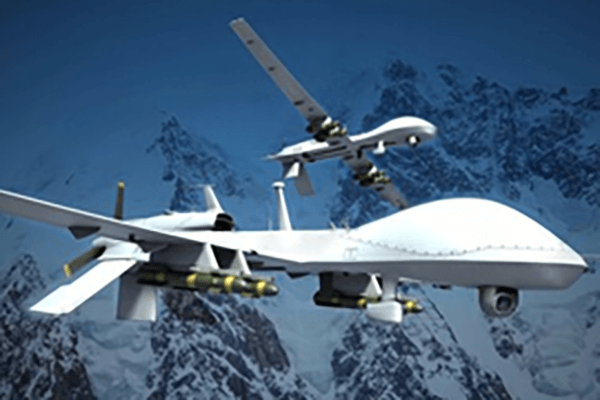
Meeting defined surface quality on a CNC-produced component becomes necessary.
- Drawing callouts communicate precise surface requirements for machined parts
- Drawings commonly cite Ra, meaning root mean square average, to measure texture
- Grasping callout meaning is essential to make parts conform to design intent
- Chosen finish influences lubrication retention, friction behavior, and part life
- Correctly reading the finish notation is necessary to attain the intended result
CNC Machining — Precision Engineering Explained

Automated machining signifies a significant manufacturing innovation employing digital instructions the machinery forms elaborate parts with exactness.
- CNC systems permit manufacture of precise components from diverse substrates
- The versatility of CNC machining makes it ideal for aerospace, automotive, medical, and electronics
- Computerized machining yields consistent replication of parts in series production
Across R&D to production scale-up CNC machining drives manufacturing evolution
CNC Specs Explained
Grasping machine spec language may feel tough at first
Nevertheless simple study and a stepwise method let you read technical specifications
Kick off by isolating primary specs such as rpm, feed, tolerance, workspace, controller
Each of these specifications contributes to the machine's overall performance.
By way of example raised spindle rpm benefits soft stocks while boosted feed enhances output.
Recognizing these ties supports choosing machines suited to target production
Ensure you peruse vendor documentation exhaustively.
Vendor literature commonly contains useful guidance and explains terms
Understanding CNC Machines: A Complete Overview
G-code driven machining centers are computer-run systems for precise automated production of varied materials They accept digital G-code to steer tools and control machining actions.
- Various CNC platforms encompass milling centers, turning lathes, routers, plasma systems
- CNC workflows handle steels, aluminum, plastics, woods, and composite laminates
- Furthermore CNC machines allow for rapid prototyping and low-volume production runs making them valuable assets for small businesses and research centers
Overview of CNC Machine Fundamentals
They embody an integration of hardware accuracy and advanced software regulation Adaptive tools rely on coded programs to manufacture from simple elements to detailed structures Primary notion maps digital geometry to tangible fabricated pieces.
- Computer Numerical Control machining
- CAD-to-CAM integration
This process involves a series of precise movements guided by the computer program Engineers contribute by setting machining variables, overseeing runs, and assuring product standards.
Impact of Surface Finish on CNC Machining
Producing expected finish through machining is important It determines product function and aesthetic quality Material selection, cutting strategy, and finishing steps all influence final texture.
Smoother surfaces elevate durability while coarser textures may impair utility Programmed machining features assorted toolpaths and cutters to deliver specified finishes.
- For instance varying cutting insert shapes |high-speed steels|cutting speeds to achieve a desired surface finish
- Additionally finishing processes including polishing and grinding refine texture
Understanding the relationship between machining parameters and surface finish is essential for achieving optimal results in CNC machining operations.
An Introduction to CNC Machine Operation
CNC machining is a precise method of manufacturing that employs computer-controlled machinery to shape parts from various materials They follow G-code sequences to generate complex parts reliably Familiarity with programming, tooling, and machine operation is key to process success
Applications of CNC machining are incredibly diverse spanning numerous industries such as aerospace automotive manufacturing From aircraft parts to precision plastic molds, CNC creates complex high-quality items
Surface Finish Notation for Machined Components
Accurate finish definition matters when machining parts with CNC It guarantees the finished part fulfills functional and visual criteria Surface finish callouts are typically represented using the system known as the Surface Roughness Ra Shown in micrometers or inches, the measurement denotes typical roughness magnitude.
Account for desired texture and the component’s purpose when selecting finish

In many cases fine finishes are necessary for accurate alignment and tight interfaces
Rugged finishes sometimes serve parts that need enhanced traction or grip
Utilize a clear and concise callout in your engineering drawings to communicate the desired surface finish State the Ra figure and any extra machining or finishing instructions required.
Bear in mind accurate finish callouts drive better manufacturing results
Kinds of CNC Machines and Their Strengths
The CNC ecosystem includes a broad selection of machines for multiple task categories They depend on CAD/CAM instruction to operate cutting tools for efficient part fabrication.
- Drills bore precise holes with controlled feed and speed
- Routers handle flat panel cutting and profiling for non-metal workpieces
- Waterjet tools cut ceramics composites and metals with no heat-affected zone
Choosing the right CNC depends on production goals material type and required accuracy Unique machine capabilities support varied industry needs such as automotive, aerospace, and medical.
Realizing Superior Texture with CNC Machining
Realizing premium surface texture is vital and CNC machining supplies tools to accomplish it By adjusting feed, rpm, and cutter geometry skilled staff shape chip flow and surface formation for better finishes Besides that quality tooling combined with good lubrication practices leads to improved surface results By choosing tailored toolpaths and precise setups operators can deliver parts with outstanding finishes.
Surface Finish Considerations in CNC Programming
Programming skills that affect finish are critical for reaching surface goals Parametric choices for feed, speed, and tool shape govern surface smoothness and defects Attentive parameter configuration alongside good coolant practice leads to superior surfaces.
- Furthermore regular tool maintenance and inspection are essential for ensuring a consistent and high-quality surface finish over time Also ongoing what cnc tool care and inspection support sustained finish reliability In addition periodic tool servicing and checks secure consistent surface quality
- To enhance finish consider workpiece material, roughness targets and use case
- Simulated machining supports parameter refinement to mitigate surface issues
- Continuous tool maintenance and oversight preserve high finish consistency
